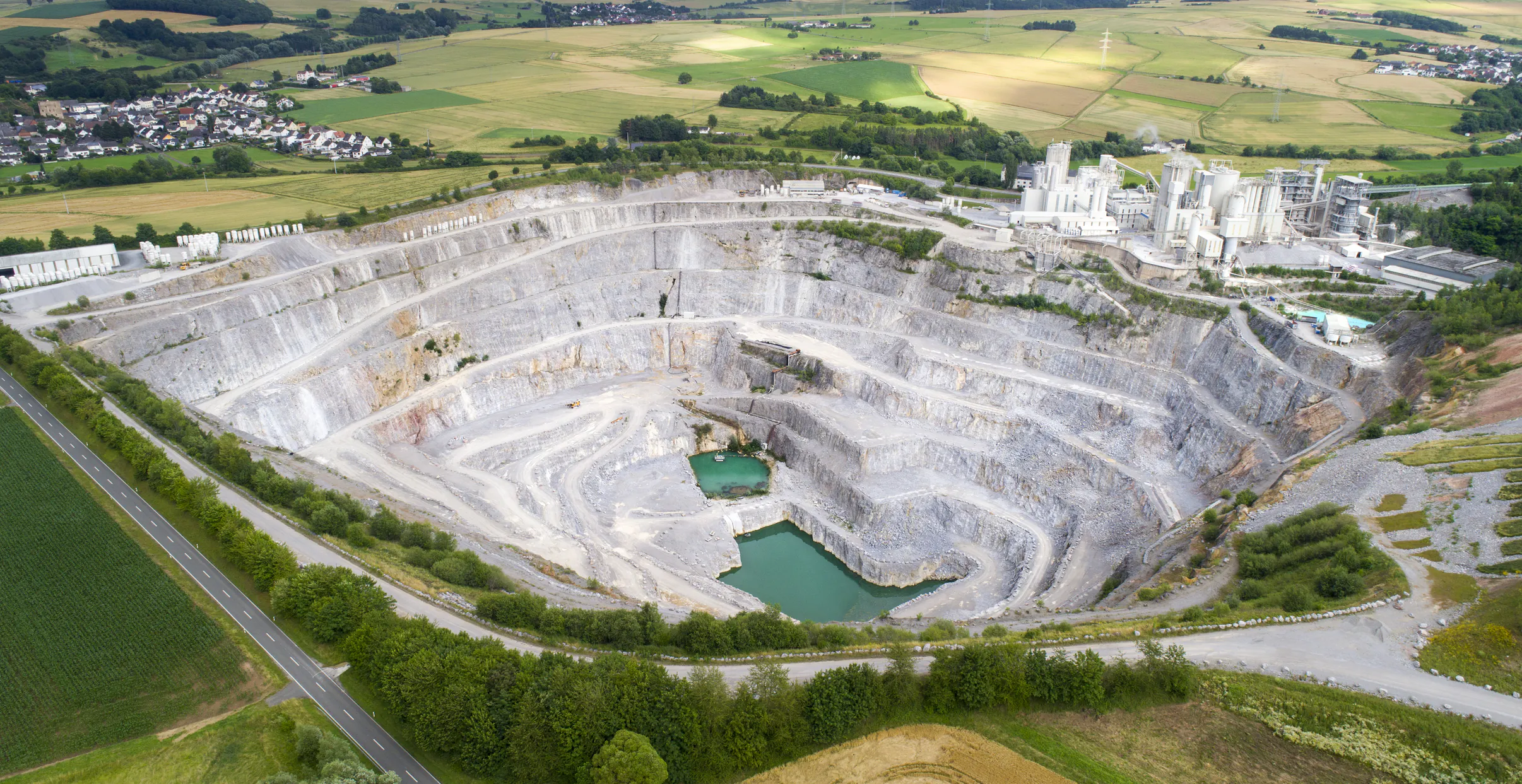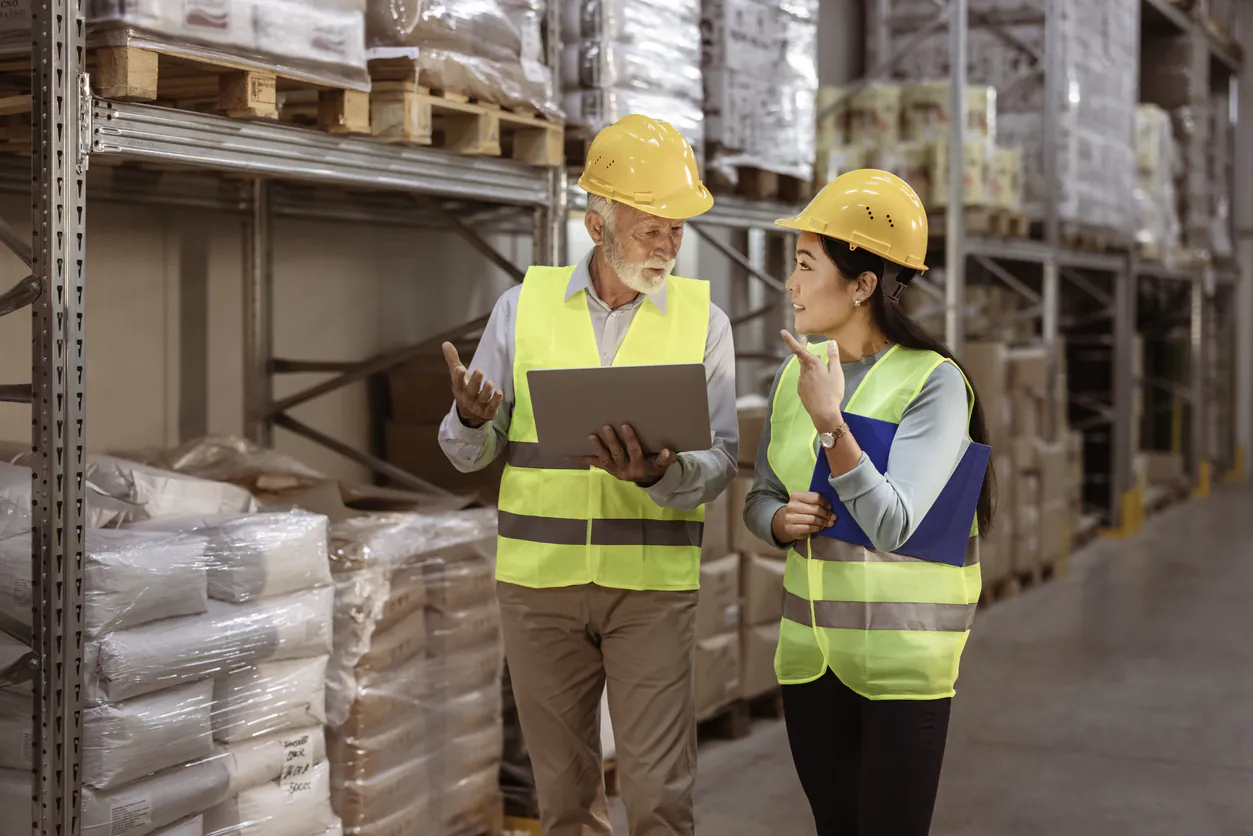Lime is a mineral with numerous applications across industries. Various types of lime are used in building and engineering, chemical manufacturing, agriculture, and several other sectors. It’s also used in carbon capture initiatives. However, despite its benefits, the actual process of creating most lime products — calcination — typically creates CO2 emissions. Because of its wide usage around the world and an increasing focus on emission reduction, several companies are developing ways of reducing and capturing emissions in the lime industry in order to make the process more environmentally friendly.
Lime Industry Overview
Industrial lime is made from limestone and chalk, and there are several types of lime with different properties that are made through different manufacturing processes.
Quicklime is produced using a technique called calcination, in which limestone or chalk is heated in a kiln to temperatures of over 900°C. This process releases CO2 emissions both when using fossil fuels to heat the kiln and when the material in the kiln reaches a specific temperature. Hydrated or slaked lime is produced by adding water to the process, which reacts with the quicklime to form calcium hydroxide. Quicklime and hydrated lime have a diverse range of uses across industries. Dolomitic lime is made through a similar process, but it uses dolomitic limestone and higher temperatures. Dolomitic lime is typically used in refractories and in metals manufacturing.
Agricultural lime (or aglime) is also a widely used product, but unlike the types of lime mentioned above, is not produced in a kiln. Aglime is crushed limestone, with the active ingredient being calcium carbonate. It’s used to correct soil acidity in farm fields and provide a source of calcium for crops.
The global lime industry was valued at roughly $40 billion in 2021 and is expected to see growth over the next several years to reach a total of nearly $50 billion. Rising demand for steel, combined with growth in the construction industry and other sectors, is helping to drive the market for lime, particularly in nations such as China, India, South Africa, and Brazil which have increasing need for new infrastructure and housing.
Asia-Pacific and North America are the largest regional markets for the lime industry. The construction sector is a significant driver in both areas, but farming activities and the many other industries active in these countries are also significant sources of demand.
Decarbonizing the Lime Industry
With construction and other industrial activities being in high demand around the world, lime production is widespread, meaning that the production of greenhouse gases is as well. In order to combat this, several companies are developing solutions to reduce, eliminate, or capture the carbon produced during the lime manufacturing process.
Electrification and Capture
SaltX Technology, a Swedish energy storage and electrification company, has developed a calcination solution that both eliminates the use of fossil fuel in the process and captures the CO2 generated by the creation of lime. The Electric Arc Calciner (EAC) uses electricity rather than fossil fuel to power the calcination process without sacrificing performance, and it isolates and captures the emissions that are generated as a byproduct.
The company has several completed and in-progress pilot projects with partners such as ABB and Sumitomo, and is currently in the industrialization phase of development. Earlier this year, SaltX entered into a partnership with SSAB and SMA Mineral to research technology that can be applied to the steelmaking process, where quicklime is used as a slag former. SaltX and SMA Mineral intend to begin construction of a plant for calcination this year, with the goal of suppling 40kt of climate-neutral quicklime to the steel industry in 2025.
UK Carbon Capture Cluster
A group of lime and cement producers in the UK have formed the Peak Cluster in an effort to reduce the sector’s CO2 emissions by 40%. The five companies have a goal of capturing 3m t/y of emissions and sequestering them offshore by 2030. The project is being led by Progressive Energy, an engineering consultancy firm leading the development of another cluster around Northwest England and North Wales.
A Sustainable Production Cycle
Leilac and Heirloom are partnering to produce a new efficient and scalable solution for atmospheric CO2 removal via direct air capture (DAC). Leilac manufactures electric kiln technology for calcination. Similarly to SaltX, the kiln separates and captures emissions during the lime production process. The company has already run successful pilots over the past few years, with its pilot plant Leilac-1 boasting a capture capacity of 25,000 tonnes of CO2 per year. It will be opening demonstration plant Leilac-2 next year with a planned capacity four times that of Leilac-1 and is running engineering studies for full-scale installations at cement plants that would capture a million tonnes annually.
Heirloom is a DAC company that uses lime in its capture process due to the material’s low cost and availability. The carbonation process captures CO2 from the air and forms limestone, accelerating a natural process from years to just three days. The partnership with Leilac allows them to feed the limestone created by Heirloom into their kiln to produce lime and capture the emissions generated. As this entire process is powered by renewable energy, the result is a net reduction in the level of CO2 in the atmosphere.
Carbon Sequestration on the Farm
Lime production isn’t the only area in which the lime industry can help reduce CO2 levels. Agricultural lime has been used for centuries to correct soil pH balance, particularly in regions with high rainfall. While there are many different materials that can be used as liming agents, one type in particular is also able to capture CO2 from the atmosphere and store it in the soil, providing two benefits in one substance. This variety, called olivine, can be found in various locations but Norway in particular is home to major deposits. It can be finely ground and spread on fields, and US company Eion Carbon is working to enable its large-scale use on farms. Eion’s CarbonLock product can be used in combination with practices such as no-till farming and the planting of cover crops to maximize both carbon capture and field resiliency.
One ton of CarbonLock can sequester roughly 0.85 tons of CO2 over the course of its life cycle. Its cost to farmers can be subsidized by Eion selling carbon credits based on the amount sequestered on farms, making it less expensive to purchase than other liming materials.
It’s still early days for CarbonLock — Eion is just beginning to commercialize the product, and independent researchers from the US are verifying its efficacy in the field, though the basic principles have been confirmed. Eventually Eion aims to be sequestering more than a billion tons of CO2 per year.



